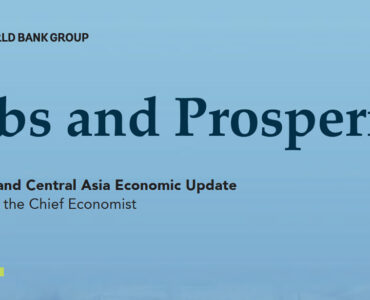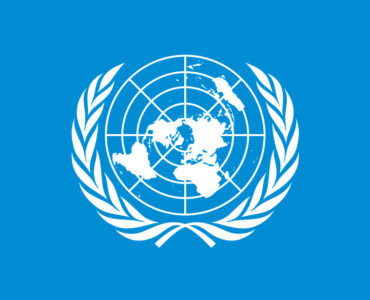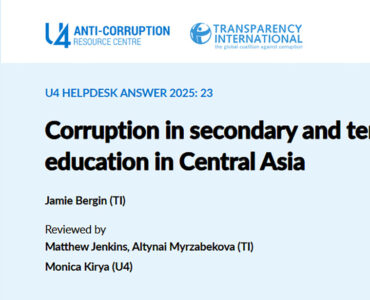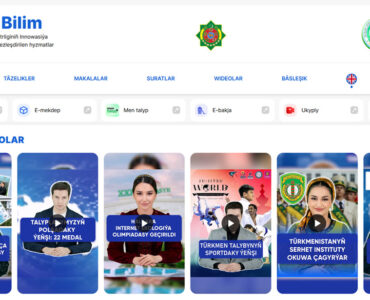Children growing up in poverty face worse outcomes in health, education, and future success compared to wealthier peers. Poverty hinders physical and cognitive development, limiting access to education and healthcare. In Turkmenistan, this crisis is reflected in issues like child labor, early marriage, gender-based discrimination, and human trafficking, all worsened by the region’s financial challenges. Yet, existing SDGs data from Turkmenistan suggests there is no child poverty in the country. This article aims to provide a more nuanced view of child poverty in the country by examining available data, national policies, and the government’s efforts to address the issue.
Child poverty, as described by UNICEF, is not only about the amount of money but also about children’s basic needs and access to essential services, being met, the lack of which can put children and their families at risk of becoming socially excluded.
Data on child poverty in Turkmenistan
In Turkmenistan, poverty is defined by the “cost of basic needs” approach that represents the share of the population unable to meet basic needs according to prices of goods and services. Despite the existing approach, Turkmenistan has not collected any national poverty reports, has no national poverty line and no disaggregated poverty-related statistics. The government of Turkmenistan also has not made the Household Budget Survey available, while household surveys related to income, consumption and living conditions are not conducted regularly.
The Multidimensional Poverty Index (MPI) for 2022 shows that 23,000 people in Turkmenistan were multidimensionally poor, while 141,000 were vulnerable to multidimensional poverty. Based on the 2019 MPI, health-related issues were the primary source of deprivation (82.4%), with education (15.5%) and standard of living (2.1%) being less significant. Given the economic situation in Turkmenistan, this does not fully reflect the realities in the country and the intensity of deprivations in Turkmenistan (34%) is comparable to other countries in Europe and Central Asia (37%).
Although the SDG 1 target on poverty is reported as achieved in Turkmenistan, with 99.9% of the population having access to basic services in 2019, the lack of reliable poverty data led the UN to recommend establishing a national poverty line.
Children (0–17 years) make up over a third of the population in Turkmenistan (2021). The most recent data (2016) indicates that 7% of children live in poverty in all its dimensions according to national definitions, while a 2017 UNICEF report estimates poverty headcount ratio among children was 42.26. These numbers are likely higher due to the impacts of the COVID-19 pandemic, climate disasters, and ongoing conflicts, which have exacerbated inequalities.
In the meantime, the 2023 Global Hunger Index described Turkmenistan’s level of hunger as moderate(score 10.3). Factors contributing to the high hunger index include poverty, conflict, lack of freedom, low status of women, and ineffective health and nutrition programs.
Standard of Living
The standard of living in Turkmenistan is low and uneven, with over 26% of employed individuals in vulnerable positions, lacking decent earnings, working conditions, and social security. While the government reports an unemployment rate of 4-5%, the real unemployment rate could be as high as 60%. Only about 25% of the workforce is regularly employed, and most self-employed individuals work in low-income jobs with little social security.
The minimum wage in Turkmenistan is 1280 manat (US$66/black market) as of January 2024, while the average self-reported salary in 2019 was 1679 manat (US$86.5/black market). According to SDGs, in 2024, the population living under poverty was as low as 0.80% for US$3.65 a day, and 0.5% under US$2.15/day (SDG 1). However, due to the black market exchange rate and inflation, these figures do not accurately reflect the true economic situation. With the minimum wage, individuals earn US$2.2 per day, and the average salary amounts to US$2.9 per day. Turkmenistan’s citizens also spend more on food (52% of their monthly income), than in neighboring Uzbekistan (30%) and Kazakhstan (43%). By comparison, people in many Western countries spend less than 15% on food.
Economic inequality, especially in rural areas, drives forced labor. Despite a ban on child labor in 2005, many children continue to work in exploitative conditions during the cotton harvest. The country also ranks fifth for human trafficking on the Global Organized Crime Index, with many poor families sending children to work in markets or fields, while an increasing number of adolescent girls turn to sex work to survive.
With the dire standard of living in Turkmenistan, only 15% of the child population was covered by social protection floors/systems in 2021, based on SGD 1, indicator 1.3.1 data, that reflects on how social protection systems are effective in improving well-being and reducing child poverty.
Health and Related Issues
Turkmenistan’s healthcare system struggles with outdated infrastructure, a lack of trained personnel, and corruption. Despite having voluntary medical insurance, a family doctor system, and 87% of essential services covered, households in Turkmenistan pay 77% of total spending out-of-pocket for healthcare – the highest in CA. In contrast, Kazakhstan’s households spend only 27.7%. This heavy out-of-pocket spending exacerbates inequities, particularly for vulnerable groups who may avoid needed medical treatment due to costs.
Turkmenistan also has the highest under-five mortality rate in Central Asia, at 41 per 1,000 live births. Mortality is particularly high among children from poor and rural households, with neonatal conditions, congenital anomalies, respiratory infections, HIV/AIDS, and diarrheal diseases being the leading causes of death.
In addition, access to clean water remains a major issue. While 83% of the population uses improved drinking water sources, the shrinking Aral Sea, due to water use for cotton cultivation, has led to health problems in Central Asia, such as anemia, kidney disease, respiratory issues, and tuberculosis. Anemia, in particular, affects 44% of children aged 6-59 months in Turkmenistan.
Donate to support Turkmen analysts, researchers and writers to produce factual, constructive and progressive content in their efforts to educate the public of Turkmenistan.
SUPPORT OUR WORKAir pollution is another environmental risk, affecting 4 out of 5 children in Central Asia and Europe. Turkmenistan ranks medium-high risk (4.6) on the Children’s Climate Risk Index. With 80% of its territory covered by desert, rising temperatures and increasing climate events, like heatwaves and droughts, threaten water availability, food security, and quality of life, particularly for children.
Additionally, the Qosh Tepa canal project in Afghanistan can potentially exacerbate water shortages in Turkmenistan’s Lebap and Mary regions, and cause social and political tensions. At COP28, President Serdar Berdimuhamedov committed to the Global Methane Pledge, acknowledging concerns over Turkmenistan’s high per capita methane emissions, largely from the oil and gas sector, which contribute 3.6% of global emissions.
Education
The government of Turkmenistan invests almost 3 times more in education than healthcare, accounting for 28% of the total government spending in 2020. Yet the education sector in Turkmenistan is critically underfunded, facing issues such as a lack of qualified teachers, inadequate science-based materials, ideologized curricula, and insufficient investment in research and development.
Secondary education is free, universal, and mandatory in Turkmenistan for ages 6 to 18. However, girls have lower enrollment rates in upper secondary, specialized, and post-secondary education compared to boys. Only 3% of the poorest individuals complete tertiary education, compared to 15% of the wealthiest, perpetuating a cycle of poverty for those from low-income families. Turkmenistan has also the highest number of children with disabilities in residential care in CA, with 87% of children aged 0-17 in formal care having disabilities.
In the meantime, nearly 70% of children aged 1-14 experienced physical or psychological punishment by caregivers, according to 2019 data. Such violence can harm mental health, academic performance, and contribute to poverty, behavioral issues, and intergenerational cycles of violence, limiting lives of children in Turkmenistan.
Girls’ Status
Turkmenistan’s adolescent pregnancy rate is relatively low at 22 pregnancies per 1,000 girls aged 15-19 as of 2024, but challenges such as limited access to sexual and reproductive health information, early marriage, and socio-economic pressures persist. A significant unmet need for family planning remains, with many young girls lacking education on contraception and gender-based violence.
In developing countries, 90% of pregnancies among girls aged 15-19 occur within early marriages, which perpetuate poverty and dependency. In Turkmenistan, 6% of girls married before 18 between 2006-2022, and adolescent pregnancies are more common in areas with higher early marriage rates. Married girls face severe limitations on autonomy and reproductive health decisions. Over 52% of girls aged 15-19 cannot refuse sex with their partners, and only 10% make informed choices about sex and contraception. Additionally, one in three married girls has a partner at least five years older.
Turkmenistan’s restricting abortion laws and lack of comprehensive sex education increase the risk of unsafe abortions. Existing programs focus on abstinence, neglecting contraception and sexual rights. Social and cultural norms limit young girls’ autonomy and access to healthcare, contributing to adolescent pregnancies and perpetuating poverty among girls.
Laws and programs on child rights in Turkmenistan
Turkmenistan accessed the United Nations Convention on the Rights of the Child in 1993, along with the International Covenant on Economic, Social and Cultural Rights in 1997. It also joined the Convention on Rights of Persons with Disabilities (2008), the Convention on the Elimination of all Forms of Discrimination against Women (1997) and the Convention relating to the Status of Stateless Persons (2011). Turkmenistan ratified the ILO Convention concerning the Prohibition and Immediate Action for the Elimination of the Worst Forms of Child Labour, in 2010 and in 2012 ratified the Ilo Convention concerning Minimum Age for Admission to Employment, making 16 the minimum working age, recently changed to 18.
There is no separate child rights entity in Turkmenistan, but national laws provide protections against exploitation and ensure children’s rights to care, health, and education. Among them are Law on the State Guarantees on the Rights of the Child, Law on Migration, Law for Psychological Services, Penal Code, Criminal Procedure Code, and Labour Code, Social Security Code, Law on Combating Trafficking Persons, Family Code, Code on Social Protection of Population, Law of Turkmenistan “On state guarantees of the right of youth for the right to work”.
Turkmenistan also has a number of state programs that aim at protecting child rights, such as:
- National Plan of Action for Realization of Children’s Rights in Turkmenistan for 2023-2028;
- National Programme of Turkmenistan for Socio-economic Development for 2011-2030;
- Early Childhood Development Strategy of Turkmenistan 2020-2025;
- National Programme on Health Nutrition of the Population for 2020-2025;
- Program for improving the activities of preschool institutions in the field of early development and pre-primary preparation of children in Turkmenistan for 2020-2025;
- National Action Plan for ensuring gender equality in Turkmenistan for 2021-2025;
- State Programme in the field of state youth policy of Turkmenistan for 2021-2025;
- National Nutrition Programme 2020-2025;
- Strategy of International Cooperation of the Youth of Turkmenistan for 2023-2030; and
- Early Childhood Development Strategy of Turkmenistan 2020-2025.
Despite national laws and programs aimed at protecting children’s rights, Turkmenistan’s efforts to address child poverty are hindered by inadequate resources and socio-economic pressures. The absence of reliable data, like a national poverty line, makes it difficult to fully assess the issue. And despite government reports suggesting progress in achieving poverty-related SDGs, children face significant challenges, including poor health, limited education, child labor, and early marriage, all exacerbated by economic inequality and weak social protections.






